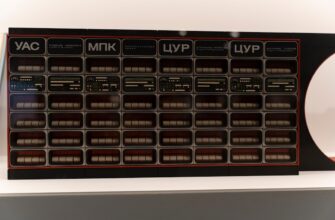🔒 Total Privacy. No Questions Asked.
USDT Mixer is your best shield against blockchain tracing. 🔗
Anonymous, fast, and designed to leave zero footprint. 🌫️
Just connect, mix, and disappear — it’s that simple.
- What is a Bitcoin Tumbler?
- How Does a Bitcoin Tumbler Work?
- The Legal Landscape of Bitcoin Tumblers
- Why Do People Use Bitcoin Tumblers? Pros and Cons
- Potential Benefits (Pros)
- Significant Drawbacks (Cons)
- Risks Associated with Using Bitcoin Tumblers
- Alternatives to Bitcoin Tumblers for Privacy
- Frequently Asked Questions (FAQ)
- Is using a Bitcoin tumbler illegal?
- Can Bitcoin mixers be traced?
- Do cryptocurrency exchanges accept mixed Bitcoins?
- Are there legal Bitcoin tumblers?
- What happens if I accidentally receive tumbled Bitcoin?
- Is CoinJoin safer than a traditional Bitcoin tumbler?
What is a Bitcoin Tumbler?
Bitcoin tumblers (also called mixers or blenders) are services designed to obscure the origin of cryptocurrency transactions. They work by pooling funds from multiple users, mixing them together, and redistributing them to new addresses. This process breaks the transparent trail recorded on Bitcoin’s public blockchain, aiming to enhance user privacy. While legitimate privacy concerns drive some users, tumblers are controversial due to their frequent association with money laundering and illegal activities.
How Does a Bitcoin Tumbler Work?
The core process involves severing the link between a Bitcoin’s source and destination:
- User Submission: You send your Bitcoin to the tumbler’s address.
- Pooling: Your coins join a large pool with coins from other users.
- Mixing: The service uses complex algorithms to shuffle and fragment the coins.
- Redistribution: You receive “clean” Bitcoin (not the same coins you sent) from the pool to a new wallet address you specify, minus a service fee (typically 1-5%).
This makes tracing the transaction history through the blockchain extremely difficult for outside observers.
The Legal Landscape of Bitcoin Tumblers
The legality of Bitcoin tumblers is complex and varies significantly by jurisdiction:
- United States: Strictly regulated. Using a tumbler to conceal funds from illegal activities violates anti-money laundering (AML) laws like the Bank Secrecy Act. The U.S. Treasury’s FinCEN classifies mixers as Money Services Businesses (MSBs), requiring registration and compliance. Notable enforcement actions include the shutdown of Helix and Bestmixer.
- European Union: Governed by the 5th and 6th Anti-Money Laundering Directives (AMLD). Mixers fall under “obliged entities” and must perform KYC/AML checks. Non-compliant services are illegal.
- Other Countries: Nations like Japan and South Korea have explicit bans. Others lack clear regulations, creating a legal gray zone. However, using tumblers for illicit purposes is universally illegal.
Key Takeaway: While tumblers themselves aren’t globally outlawed, using them to launder money, evade taxes, or hide criminal proceeds is illegal in most countries. Even privacy-focused use may attract regulatory scrutiny.
Why Do People Use Bitcoin Tumblers? Pros and Cons
Potential Benefits (Pros)
- Enhanced Privacy: Protects against surveillance of financial transactions.
- Security: Reduces risk of targeted theft by obscuring wallet balances.
- Fungibility: Helps ensure all BTC are treated equally, regardless of transaction history.
Significant Drawbacks (Cons)
- Legal Risk: High potential for investigation or prosecution.
- Scams: Many tumblers are exit scams, stealing deposited funds.
- Fees: Service charges reduce your cryptocurrency holdings.
- Blockchain Analysis: Advanced tools (e.g., Chainalysis) can sometimes de-anonymize mixed transactions.
Risks Associated with Using Bitcoin Tumblers
Beyond legality, users face substantial risks:
- Regulatory Crackdowns: Exchanges may freeze funds traced back to mixers.
- Loss of Funds: No recourse if the mixer vanishes with your coins.
- Reputational Damage: Tainted coins can lead to blacklisting by exchanges or businesses.
- Increased Scrutiny: Banks or authorities may flag accounts linked to mixer activity.
Alternatives to Bitcoin Tumblers for Privacy
For legal privacy enhancement, consider these compliant options:
- Privacy Coins: Monero (XMR) or Zcash (ZEC) offer built-in, protocol-level anonymity.
- Decentralized Exchanges (DEXs): Trade without KYC by using platforms like Bisq.
- CoinJoin: A trustless, decentralized mixing technique (e.g., Wasabi Wallet, Samourai Wallet) that combines transactions without a central operator.
- Lightning Network: Enables fast, low-cost transactions with reduced on-chain footprint.
Frequently Asked Questions (FAQ)
Is using a Bitcoin tumbler illegal?
It depends on intent and jurisdiction. Using tumblers to launder money or hide criminal activity is illegal. Even for privacy, it may violate AML laws in regulated regions like the U.S. or EU.
Can Bitcoin mixers be traced?
While designed to obscure trails, sophisticated blockchain analysis firms and law enforcement can sometimes trace mixed funds using pattern recognition and clustering algorithms, especially with repeated usage.
Do cryptocurrency exchanges accept mixed Bitcoins?
Major exchanges (Coinbase, Binance, Kraken) often block or freeze deposits linked to known mixers via compliance software. Using tumblers risks account suspension.
Are there legal Bitcoin tumblers?
Truly “legal” tumblers are rare. Services claiming compliance typically enforce strict KYC/AML, negating privacy benefits. Most operate in regulatory gray areas or illegally.
What happens if I accidentally receive tumbled Bitcoin?
If received unknowingly, document the source. Exchanges may require explanation but typically won’t penalize users without evidence of intent. Proactively report suspicious transactions.
Is CoinJoin safer than a traditional Bitcoin tumbler?
Yes. CoinJoin (e.g., Wasabi/Samourai) is decentralized, non-custodial, and avoids centralized mixing services. It’s harder to shut down and reduces counterparty risk, though regulatory ambiguity remains.
🔒 Total Privacy. No Questions Asked.
USDT Mixer is your best shield against blockchain tracing. 🔗
Anonymous, fast, and designed to leave zero footprint. 🌫️
Just connect, mix, and disappear — it’s that simple.








